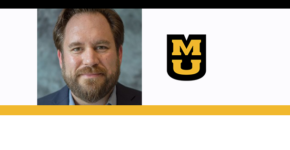 The minds of children are affected by disasters.
The minds of children are affected by disasters.
Brian Houston, associate professor of communication at the University of Missouri, examines how to help teachers explain what happened to their students.
Brian Houston, PhD, is Associate Professor in the Department of Communication at the University of Missouri and is Co-Director for the Disaster and Community Crisis Center (DCC) at the University of Missouri.
Houston’s research focuses on communication at all phases of disasters and on the mental health effects and political consequences of community crises. Recent and current research projects have examined the impact of media coverage of terrorism on children and adults, the role of new media during disasters, and the capacity for using information communication technologies to increase community resilience. These projects are located at the intersections of the literatures addressing disasters, communication, media, public health, mental health, and political socialization.
Houston’s work has been supported by the Substance Abuse and Mental Health Services Administration (SAMHSA), National Institute of Mental Health (NIMH), National Institute for Nursing Research (NINR), U.S. Department of Veterans Affairs (VA), and the National Consortium for the Study of Terrorism and Responses to Terrorism (START).
Disaster Media Coverage and Children
In a recent study, we examined how media coverage of natural and human-caused disasters can affect children and how teachers and school staff can help with any negative reactions to these events. We know from previous research that the more children are exposed to disaster media coverage, the more they might have negative emotional or behavioral reactions, such as feeling upset or worried, or being distracted from school work.
These effects have been observed when children live in a community experiencing a disaster, and also when they are located far from the event. Schools are an effective location to deliver support and resources for children related to disasters, so we conducted in-depth interviews with 42 school staff — including teachers, counselors and administrators — to understand what media reactions school staff had observed in the past and how school staff thought about their roles in helping students deal with disaster media reactions.
School staff reported that students did often exhibit reactions to disaster media coverage. The staff we interviewed discussed natural disasters like tornadoes, and human-caused events, such as mass school shootings. The two main student reactions to disaster media coverage reported by participants were students expressing emotions related to the event, such as feeling sad or scared; and students asking questions about the event, such as what happened or why it happened.
When talking with students about disasters, school staff provided information, comforted students, assured students they were safe, discussed school safety and talked about ways to help those affected by the event. We also found that school staff wanted some help with these student conversations. School staff indicated they often felt unprepared for difficult conversations about disasters and they desired step-by-step guidelines for discussions about frightening events covered by the media.
